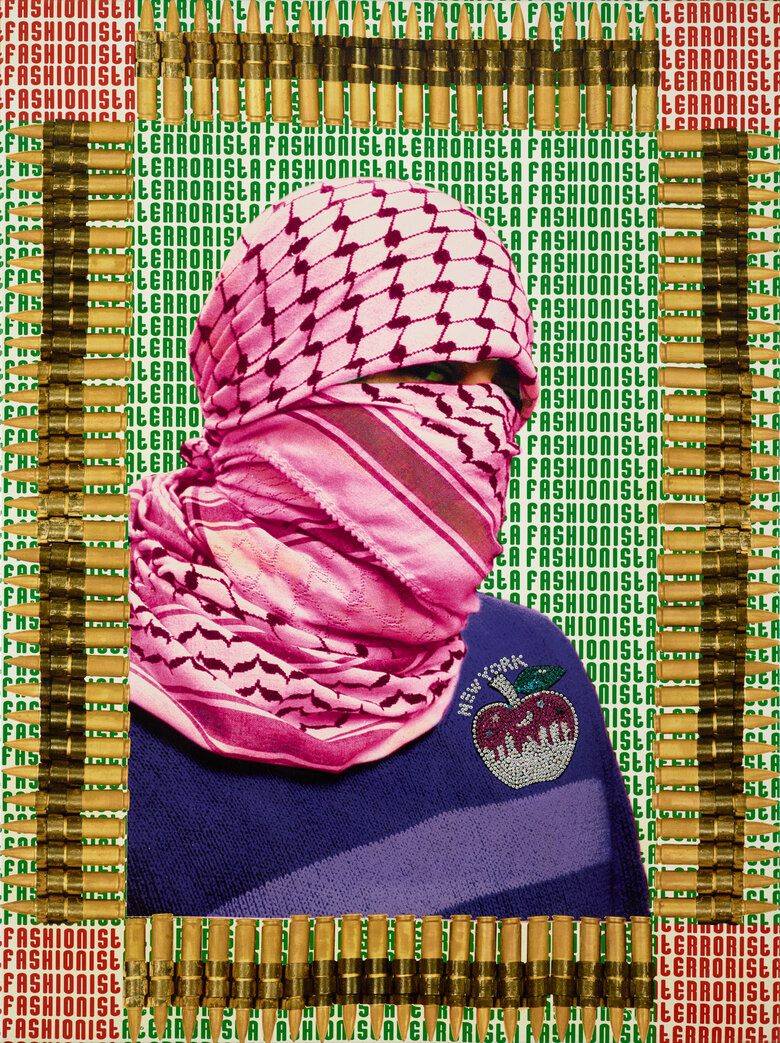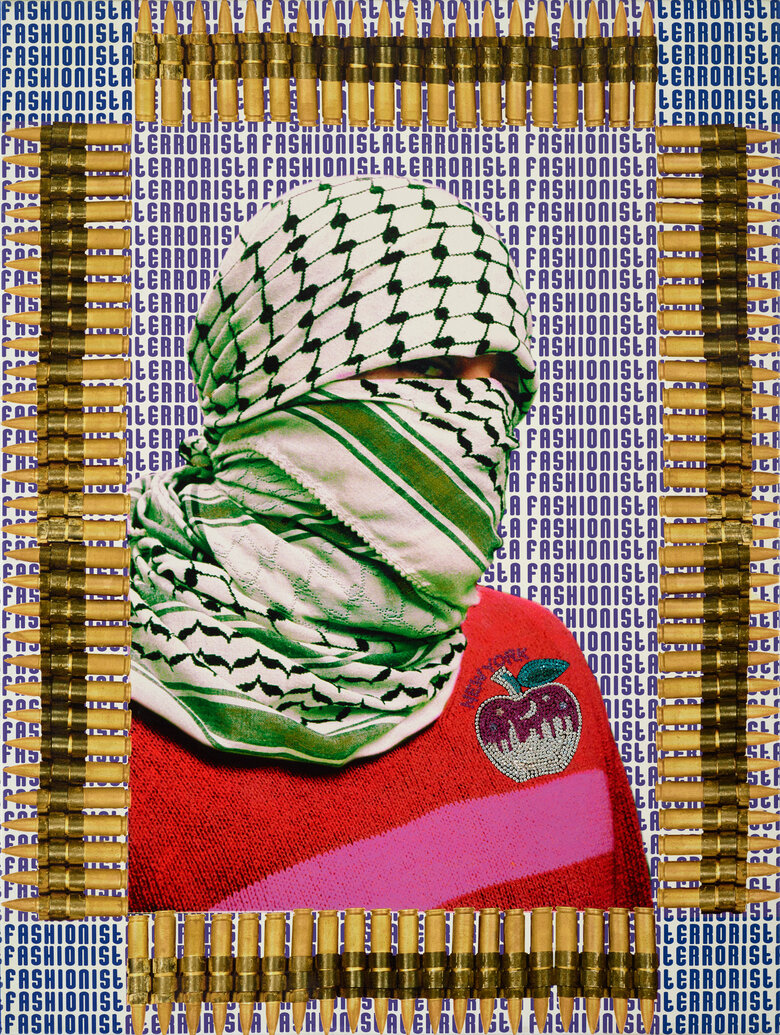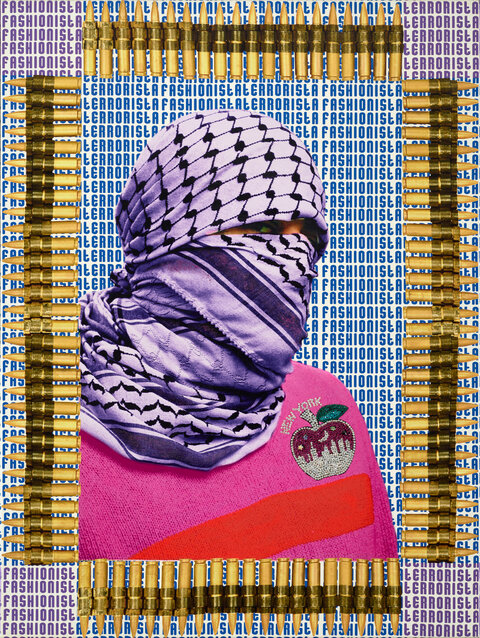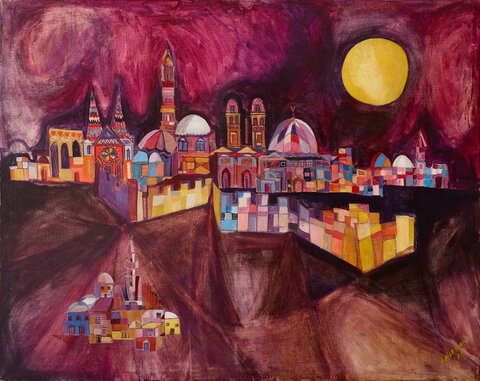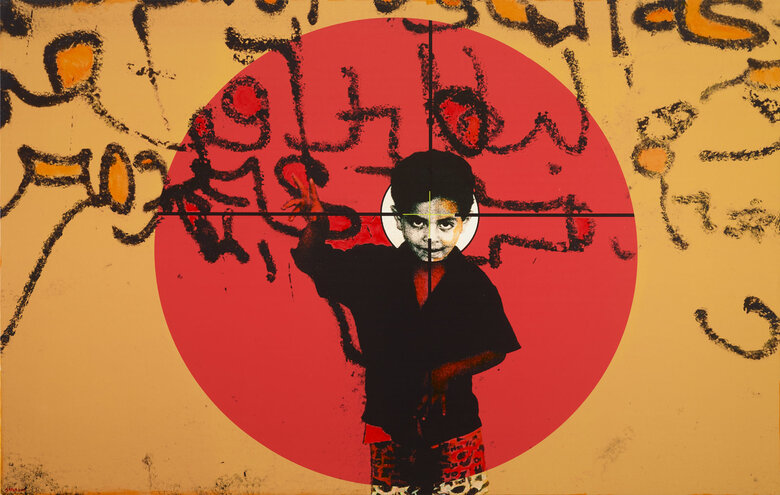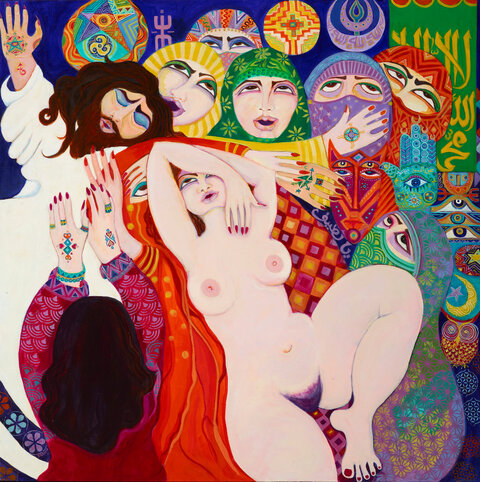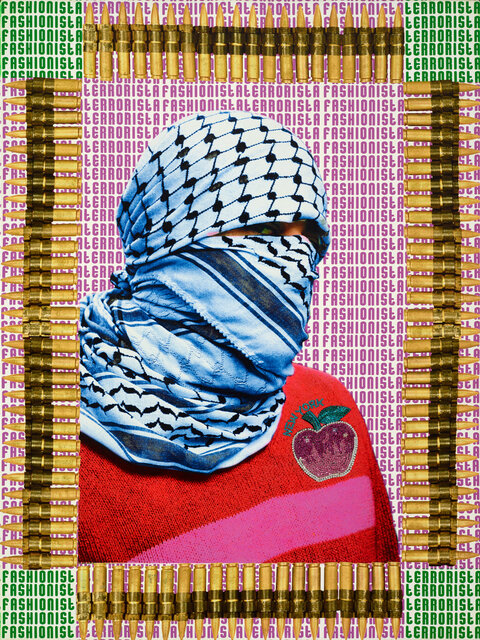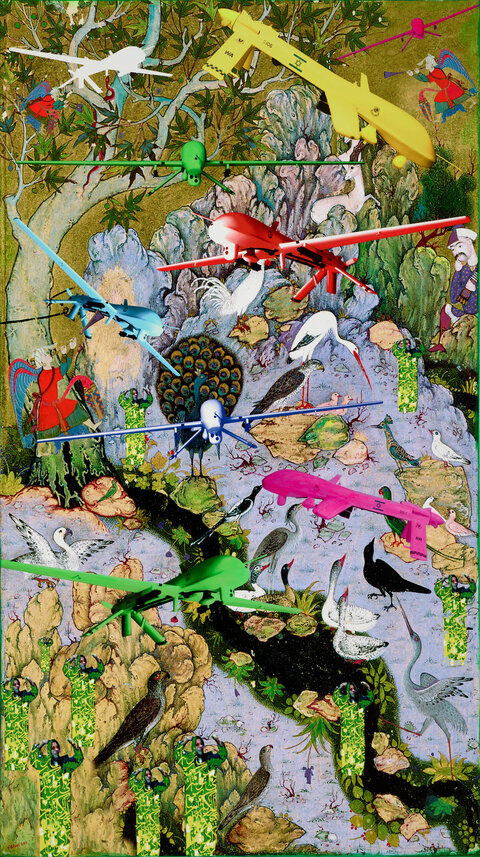Laila Shawa was born in 1940 to a wealthy Gazan family. As a child, she was curious about art, but per her own description, her career as an artist started with a happy coincidence. In the...
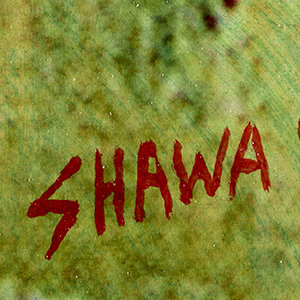

LAILA SHAWA, Palestine (1940 - 2022)
Bio
Written by Alessandra Amin
Laila Shawa was born in 1940 to a wealthy Gazan family. As a child, she was curious about art, but per her own description, her career as an artist started with a happy coincidence. In the mid-1950s, she was enrolled in the American University of Cairo as a student of political science and sociology when she had tea with her father and a family friend. When he found out that Shawa was not enjoying her studies, the friend, an architect, expressed confusion as to why she wasn’t studying art, given her exceptional drawing skills. He suggested she enroll at the Leonardo Da Vinci School of Art in Cairo, where he was a professor; her father agreed, and the rest is history.
Following a year at Leonardo Da Vinci, Shawa transferred to the School of Fine Arts in Rome, where she earned a BA with honors in 1960. From 1960 to 1964, she remained in Rome to study at the Scuola di Arti Ornamentali San Giacomo, where she earned a degree in plastic and decorative arts. During this time, she traveled to Salzburg for summer courses with the Austrian expressionist Oskar Kokoschka. Following her graduation, she returned to Gaza, where from 1965 to 1967, she served as a supervisor for the UNRWA arts and crafts education division. She was also a lecturer with the UNESCO Institute of Education during this time. In 1968, she moved to Beirut, where she lived as a full-time artist until the outbreak of the Lebanese civil war in 1975. For the next twelve years, Shawa lived between London and Gaza, dedicating the bulk of her time to the design of the Rashad Shawa Cultural Center in Gaza, named after her father. The cultural center bore stained-glass windows that Shawa herself designed, and was intended to house art exhibitions and theatrical productions. The artist dreamed of expanding the center to house an arts college and a museum of contemporary Palestinian art, but unfortunately, the project did not go as planned. Occupied by Arafat for a time, the building was bombed during multiple Israeli assaults on Gaza and has been requisitioned by Hamas in recent years; tragically, it has never fulfilled its intended purpose. Though she has lost the “great and misplaced optimism” with which she began the project, Shawa still hopes to one day return to Gaza and restore the building as the arts hub it was destined to be.
Throughout her career, Laila Shawa has experimented with a wide variety of materials, boasting an oeuvre consisting of everything from oil paintings to fashion mannequins covered in intricately arranged plastic rhinestones. Though her corpus of work is diverse, two factors are consistent through time and across media: color and commitment. Shawa’s painting, photography, and sculpture practices are all characterized by the use of bright, vibrant colors, whose jovial connotations often clash with the subject matter of the work. This stark juxtaposition is perhaps most evident in AKA Peace (2012), a decommissioned Kalashnikov machine gun (AK-47) that Shawa covered in gold paint, glittering rhinestones and Day-Glo plastic butterflies. AKA Peace is indicative of her work’s other unifying factor, which is a commitment to social and political engagement. Among her most famous works, for example, is the satirical Impossible Dream series (1987-88), which comprises characteristically colorful paintings of women in niqab holding ice cream cones in front of their veiled faces. The women are presented with a “catch-22”; they can eat the ice cream or keep their faces covered, but they cannot do both.
This work speaks to Shawa’s longstanding stance on the veil, to which the Muslim artist is staunchly opposed. Like many Muslim feminists of her generation, Shawa argues that the practice of veiling has no real basis in religion and is instead a social phenomenon designed to control and subdue the so-called “weaker sex.” The need to oppress women, Shawa says, stems from the insecurity of Arab men who have “lost control of their lives due to Western hegemony and complicit and corrupt dictatorships in their various forms.” The Impossible Dream was inspired by the specific circumstances of the First Intifada in Gaza, during which women played a pivotal role. Shawa attributes the widespread veiling of women during this period to the wounded pride of men, who were threatened by the newfound political agency of their wives and daughters. Nevertheless, Shawa insists that her paintings are not meant to critique men, but rather address women who “accept their fate” as second-class citizens. “My critique is more of the women themselves,” Shawa states, and “their complicity in reducing their status to an invisible state, while at the same time yearning silently for the freedom Western women seem to enjoy… the message [of The Impossible Dream] is that they should give themselves more value and certainly more respect.”
Laila Shawa lived and worked between London, UK, and Vermont, USA.
Sources
Samina Ali, “The Political is Personal: An Interview with Palestinian Artist Laila Shawa,” Muslima online, http://muslima.globalfundforwomen.org/content/political-personal
“Laila Shawa,” October Gallery website, http://www.octobergallery.co.uk/artists/shawa/index.shtml
Helen Khal, The Woman Artist in Lebanon,Catholic Press, Lebanon, 1987
Wijdan Ali, Contemporary Art from the Islamic World, Scorpion Books, London, UK, 1988 Shammout, Ismail. Art in Palestine, AI Qabbas Press, Kuwait 1989
Laila Shawa, Works 1965- 1994 AI-Hani Books, 1994
Forces of Change, Artists of the Arab World, Washington D.C., USA, 1994
Bahnasi, Dr. Afif, Pioneers of Modern Art in the Arab Countries,Dar Al-Raed Al-Arabi, Beirut. Shawa and Wijdan, October Gallery,1994, Amica Press.
The Right to Hope,Earthscan Publications Ltd., 1996, London
Impressions,H. Aschehoug & Co., 1996, Norway.
The Right to Write,Agnes Scott College, Atlanta, USA.
Artistes Palestiniens Contemporains,Institute Du Monde Arabe, 1997, Paris, France.
The Space Between Our Footsteps,Simon & Schuster, 1998.
Dialogue of the Present,Woman’s Art Library, 1999.
Mediterranea,Art Life 1998, Brussels, Belgium.
Twelve Arab Artists,The Werled Museum, 2001, Netherlands.
Between Legend and Reality, Aurora Art Museum, Reykjavik Art Museum Iceland 2002.
From the Ocean to the Gulf and Beyond: Arab Modern Art, The Royal Society of Fine Arts, 2002, Amman, Jordan.
Breaking the Veil,The Jordan National Gallery and FAM, 2002 Rhodes, Greece.
Word into Art, The British Museum 2006/.2008
Meditarraneo, A Sea that Unites,The Italian Cultural Institute, London 2008.
Sarab,DIFC, Dubai 2008.
Impossible Dreams: the Qork and Art of Laila Shawa,SkIRA Books, Milano, 2009
Contemporary Art in The Middle East, ArtWorld, Black Dog Publishing, London, UK, 2009.
CV
Selected Solo Exhibitions
2022
Laila Shawa: A Living Artist, P21 Gallery, London, United Kingdom
2019
Laila Shawa-Open Studio, Janet Rady Fine Art, London United Kingdom
2012
The Other Side of Paradise, October Gallery, London, UK
2011
Trapped: A Female Suicide Bomber,Galerie Imane Farès, Paris, France
2010
Sarab (Mirage),The Art Museum, Sharjah, UAE
Arabopop, Articulate Baboon Gallery, Cairo, Egypt
2008
Sarab (Mirage),Atrium Gallery, DIFC, Dubai, UAE
2000
In the Name of God: Crucifixion 2000, Ashmolean Museum, Oxford, UK
1994
The Walls of Gaza Series II,The Library, SOAS, University of London, London, UK
1992
Women and Magic, The Gallery, London, UK
1990
Women and the Veil,Jordan National Gallery, Amman, Jordan
1975
Of Horses and Cities,L’Antiquaire Gallery, Beirut, Lebanon
1972
Exhibition at Sultan Gallery, Kuwait City, Kuwait
1971
Cities of Gold,Dar Tunis, The Tunisian Cultural Centre, Beirut, Lebanon
1970
Laila Shawa at the Vendome, Hotel Vendome, Beirut, Lebanon
1968
Exhibition of drawings by Laila Shawa, The Book Centre Gallery, Beirut, Lebanon
1965
Contrast and Difference,Marna House, Gaza, Occupied Palestine
Selected Group Exhibitions
2024
Hudood: Rethinking boundaries, The Brunei Gallery, SOAS, Bloomsbury, London, UK
Transvangarde: Free Style Cipher, October Gallery, London, United Kingdom
2023
In Solidarity with Palestine, Darat al Funun, Amman, Jordan
The Little Prince of Gaza, Dalloul Art Foundation (DAF), Beirut, Lebanon
2022
58th Carnegie International, Carnegie Museum of Art, Pittsburgh , Pennsylvania, USA
2021
Cities Under Quarantine: The Mailbox Project, Villa Romana, Florence, Italy
Women in the Arts, INSIDE/OUT, CAP (Contemporary Art Platform), Shuwaikh Industrial, Kuwait and CAP Collection Online through Google Art & Culture (complete set of the Walls of Gaza II series)
Postcolonial Ecologies, Darat al Funun, Amman, Jordan
The Nude: Conflict, Dalloul Art Foundation (DAF), Beirut, Lebanon
2020
Atmospheres: Artists Of The Transvangarde, Bloomsbury, London, UK
Art of Palestinian Women, Museum of the Palestinian People, Washington DC., USA
2019
Dream No Small Dream: Celebrating 40 Years of the Transvangarde, October Gallery, London, UK
2018
Transvangarde, October Gallery, Bloomsbury, London, UK
2014
35 Years of Transvangarde: Contemporary art from around the planet, October Gallery, Bloomsbury, London, UK
2011
Passport to Palestine,La Scatola Gallery, London, UK
Contemporary Art/Arab & Iranian, Sotheby’s, London, UK
2010
Miragens: Contemporary Art in the Islamic World, Centro Cultural Banco do Brasil, Rio de Janeiro, touring to Sao Paolo, Brasilia, Brazil
2010
Sajjil, A Century of Modern Art, Mathaf, Arab Museum of Modern Art, Doha, Qatar Co-incidence, Galerie Imane Farès, Paris, France
Crunchtime: Artist’s Responses to the Global Crisis, International Visual Arts Event, York, UK
2009
Contemporary Calligraphic Art from the Arab World, Nabad Gallery, Jabal Amman, Jordan
2009
Middle Eastern and European Art, the Recessionists, Somerset, UK
Arabesque:Arts from the Arab World, the Kennedy Centre, Washington, DC, USA
2008
Arab Print,Edition I, Meem Gallery, Dubai, UAE
Routes, Middle Eastern and Arab Art, Waterhouse & Dodd, London, UK
Roads Were Open, Roads Were Closed,Third Line Gallery, Dubai, UAE
Mediterraneo, Italian Cultural Institute, London, UK
Spring Show, October Gallery, London, UK
Word into Art, a British Museum touring exhibition, The Atrium, DIFC, Dubai, UAE
2006
Word into Art,British Museum, London, UK
Text Messages,October Gallery, London, UK
2005
Walled In: Walled Out,Laila Shawa and Noa Lidor, Green Cardamom, London, UK
2003
Religion, Art and War, Maison Des Artes, London, UK
Transvangarde: Contemporary Art from Around the World, (October Gallery), Kulturbrauerei, Berlin, Germany
2002
Breaking the Veils: Women Artists from the Islamic World, exhibition organised by the
Royal Society of Fine Arts, Jordan, and Pan-Mediterranean Women Artists Network F.A.M. (Femme- Artist-Méditerranée) based in Greece which travelled throughout Europe, Australia and USA
Between Legend and Reality, Modern Art from the Arab World,Reykjavik Art Museu and Akureyri Art Museum, Iceland
From the Ocean to the Gulf and Beyond: Arab Contemporary Art,the Jordan National Gallery of Fine Arts, Amman, Jordan
A Thousand Ways of Being. Memory and Presence in the Arts of Diasporas, October Gallery, London, UK
Masterstrokes:Contemporary Arabic Calligraphy, October Gallery, London, UK
Transvangarde, An Artistic World Wide Web, October Gallery, London, UK
2001
Twelve Arab Artists,Wereldmuseum, Rotterdam, the Netherlands
1998-2000
Art Beyond Borders,UNESCO and TIMOTCA (The International Museum of Twentieth Century Art); UNESCO Headquarters, Paris, France; Mitra Municipal Gallery, Lisbon, Portugal; Las Vegas Art Museum, USA
2000
First International Forum for a Culture of Peaceby Pan-Mediterranean Women Artists Network, Rhodes, Greece
1990-2000
Dialogue of the Present,Hot Gallery, Bath; Plymouth Arts Centre, Plymouth; Brunei Gallery, SOAS, London; Pittshanger Manor Gallery, London; Brighton University Gallery, Brighton, UK
1998
Mediterranea,Grand Palais, Brussels, Belgium
1997
Artistes palestiniens contemporains, Institute du Monde Arabe, Paris, France
1996
Transvangarde, October Gallery, London, UK
Contemporary Arab Artists, the World Bank Gallery, the World Bank Building, Washington DC., USA
The Right to Write: Calligraphic Works from the Collection of the Jordan National Gallery of Fine Arts,The Dalton Gallery, Agnes Scott College, Decatur, Georgia, USA
1995-97
The Right to Hope, One World Art, UN travelling exhibition starting in Johannesburg, South Africa (whole exhibition was lost in Sarajevo 1997/8)
1995
Contemporary Middle Eastern Art, recent acquisition, John Addis Gallery, British Museum, London, UK
Artists’ View, The Arab World, Willamette Arts Gallery, Willamette University, Salem, Oregon, USA
1994–95
Forces of Change, Artists of the Arab World, National Museum of Women in the Arts, Washington, DC; Dudley House, Lehman Hall, Harvard University, Cambridge, MA; The Chicago Cultural Centre, Chicago Illinois; Wolfson Gallery and Central Gallery, Miami
Dade Community College, Miami Florida; Nexus Contemporary Art Centre, Atlanta, Georgia; Bedford Gallery,Walnut Creek, California; Gwinnett Arts Center, Duluth, Georgia, USA
1994
Shawa and Wijdan, October Gallery, London, UK
From Exile to Jerusalem,Al-Wasiti Art Centre, Jerusalem
1993
Exhibition of Limited Prints Editions at SAGA, Salon de l’estampe et de l’édition d’art à Tirage limité, Grand Palais, Paris, France
1992
Three Artists from Gaza: Fayez Al Hasani, Kamel al Mughanni and Laila Shawa,The Shoman Foundation, Amman, Jordan
1990
Malaysian Experience, National Art Gallery of Malaysia, Kuala Lumpur, Malaysia
1989
Contemporary Art from the Islamic World, Barbican Centre, London, UK
1988
The Baghdad Biennale,Saddam Centre, Baghdad, Iraq
1987
Arab Women Artists in the UK, Kufa Gallery, London, UK
1968-78
With Palestinian Union of Artists, based in Beirut, exhibitions in most Arab countries, North Africa, Russia, China, Japan, Malaysia, Europe, UK and USA
Collections
The National Art Gallery, Kuala Lumpur, Malaysia
Jordan National Gallery of Fine Arts, Amman, Jordan
British Museum, London, UK
Museum of Modern Art, Glasgow, Scotland The Arab Bank Limited, Amman, Jordan
The Palestinian Union of Artists, Beirut, Lebanon
The Kuwait Fund, Kuwait City, Kuwait
Rashad Shawa Cultural Centre, Gaza, Palestine
The Birzeit University collection, Ramallah, Occupied Palestine
The Khaled Shoman Foundation: Darat Al Funun, Amman, Jordan
National Museum for Women in the Arts, Washington DC, USA
Qatar Museum for Contemporary Middle Eastern Art, Mathaf, Qatar
Wereldmuseum, Rotterdam, the Netherlands
TIMOTCA, Las Vegas, USA
World of Islam Festival Trust, London, UK
Ashmolean Museum, Oxford, UK
The Burrell Collection, Art Gallery and Museum, Glasgow, Scotland
DIFC, Dubai, UAE
Spazio Brazzà, Moruzzo, Italy
The Benevolent Society, Gaza, Palestine
Ramzi and Saeda Dalloul Art Foundation, Beirut, Lebanon
Barjeel Art Foundation, Sharjah, UAE
Documents
World of Islam Festival (Londres 1976): Naissance d'un nouveau paradigme pour les arts de l'Islam
Monia Abdallah
www.jstor.org, French, 2019
Contemporary Arab Women's Art: Dialogues of the Present
Fran Lloyd
Woman's Art Journal, Vol. 26, No. 1 (Spring - Summer, 2005), pp. 56-57, English, 2019
The Importance of Context: A Study of Laila Shawa, Where Souls Dwell V
Briony Lewis
University of Bristol, Department of History of Art, English, 2015
Press
A Look at Palestinian Artists in “A Banquet For Seaweed: Snapshots from the Arab 1980s”
Callie Storie
www.glasstire.com, English, 2023
رحيل ليلى الشوا.. الفن في مواجهة الصمت
www.alaraby.co.uk, Arabic, 2022
Laila Shawa
www.theguardian.com, English, 2022
Palestinian pop artist whose work reflected the harsh realities of her homeland
Revisiting Arab Women’s Diasporic Art Practices in 1990's London
Fran Lloyd
Middle East Institute, English, 2012
THE POLITICAL IS PERSONAL
www.muslima.globalfundforwomen.org, English, 2017
AN INTERVIEW WITH PALESTINIAN ARTIST LAILA SHAWA LAILA SHAWA, PALESTINE / UK / USA
Q&A with Laila Shawa
Princeton University Art Museum, English, 2018
The Middle East in London
SOAS University of London
SOAS University of London, English, 2014
Istanbul Exhibition Casts Middle Eastern Art in a Fresh Light
Susanne Fowler
The New York Times, English, 2013
إبداعات نسائية تشكيلية فلسطينية - ديوان العرب.pdf
LAILA SHAWA: THE OTHER SIDE OF PARADISE
www.octobergallery.co.uk, English, 2012
Laila Shawa : A Bold and Provocative Art
www.bridgemaniimages.com, English, 2023
Laila Shawa obituary
Oliver Basciano
www.theguardian.com, English, 2022
Palestinian pop artist whose work reflected the harsh political realities of her homeland
Mother of Arabic Revolutionary Art: Laila Shawa Tells the World Palestine’s Story
Hafsa Elazzaoui
www.mvslim.com, English, 2018
ART AS A VENUE FOR SOCIAL COMMENTARY: MODERN ARAB PRINTMAKERS AND SOCIAL CONSCIOUSNESS
Amal Omar Ahmad Badghaish, Mohammad Khizal Mohamed Saat
www.ijham.com, English, 2022
Portrait d’une artiste et militante palestinienne : Laila Shawa
Katarzyna Lemanska
www.association-belgo-palestinienne.be, French, 2013
Laila SHAWA — a prolific and revolutionary artist from Palestine
Nata Andreev
www.medium.com, English, 2020
Laila Shawa obituary _ Art _ The Guardian.pdf.zip
LAILA SHAWA Artwork
Become a Member
Join us in our endless discovery of modern and contemporary Arab art
Become a Member
Get updates from DAF
Follow Artists
Save your favourite Artworks
Share your perspectives on Artworks
Be part of our community
It's Free!
We value your privacy
TermsCookiesPrivacy Policies
Become a Member
Get updates from DAF
Follow Artists
Save your favourite Artworks
Share your perspectives on Artworks
Be part of our community
It's Free!
We value your privacy
TermsCookiesPrivacy Policies
Become a Member
Get updates from DAF
Follow Artists
Save your favourite Artworks
Share your perspectives on Artworks
Be part of our community
It's Free!
We value your privacy
TermsCookiesPrivacy Policies
Welcome to the Dalloul Art Foundation
Thank you for joining our community
If you have entered your email to become a member of the Dalloul Art Foundation, please click the button below to confirm your email and agree to our Terms, Cookie & Privacy policies.
We value your privacy, see how
Become a Member
Get updates from DAF
Follow Artists
Save your favourite Artworks
Share your perspectives on Artworks
Be part of our community
It's Free!
We value your privacy
TermsCookiesPrivacy Policies

